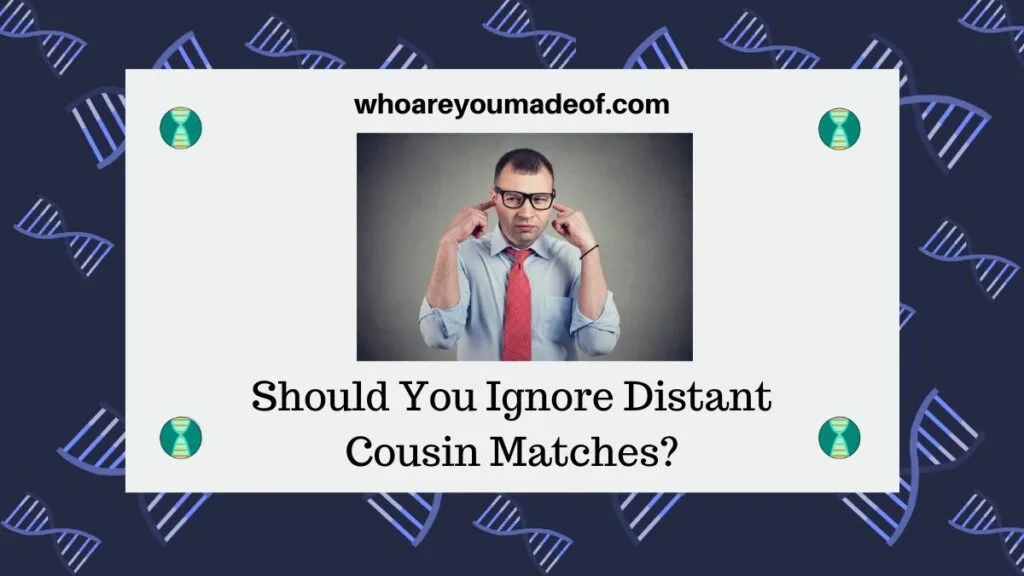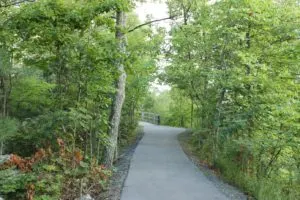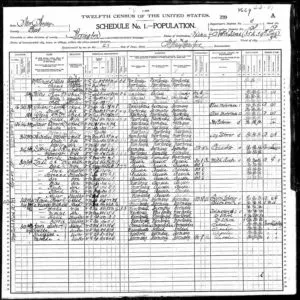Have you wondered if you should ignore your distant cousin DNA matches? Is there anything that can be gained through trying to identify how you are related to these relatives?

Some of us have many thousands of DNA matches. Since it can be difficult to tell which matches are most important, many of us focus on those individuals towards the top of this list who are estimated to be most closely related.
Your DNA testing company sorts your DNA matches into different categories, ranging from immediate family to distant cousins. While it's easy to understand why it would be interesting and helpful to talk to those closer cousins, you might be wondering if you should just ignore those distant cousin matches.
Throughout my years of researching DNA matches, I have found many gems hidden in my list of DNA matches that fall into the "distant" category. In this post, I will present a few good reasons why I believe that you should not ignore these "distant cousin" matches.
Your "Distant" Cousin Might Not Actually Be Distant
The top reason that you should not ignore distant cousin matches is because these DNA matches are not always truly distantly related. Especially if you define a distant cousin by the technical definition, which is anyone related more distantly than a third cousin.
The way that DNA is passed down is interesting, and seemingly, completely random. Each generation, some DNA from the previous generation is "lost" because it is not passed down to offspring.
Sometimes, DNA from certain lines gets left out more quickly than others - there is no way to predict why or when this will happen, and it doesn't really have any significance. The only consequence is that sometimes, you could share less DNA with any given cousin than average for that degree of cousinship.
This has been a very simplified explanation for a complicated concept. I have an example for you that I hope will help illustrate the idea.
Example of a distant cousin that's not so distant
The example below is from my mother's DNA match list, and illustrates her match with a second cousin. Contact with this second cousin has resulted in a very fulfilling family relationship, and we have all been able to share information about our recent ancestors to help each other fill in the blanks on the family tree.
- My mother has a 2nd cousin. We'll call him "Jeff". Jeff's grandfather and my mother's grandfather were half-brothers.
- They were half-brothers because the great-grandfather's first wife died, and he remarried.
- Because the grandfathers were half-brothers, they immediately shared 50% less DNA than two full brothers typically would, leaving less DNA from their shared ancestor to be passed down to their descendants
- This means that their children (my mother's mother and Jeff's father) shared 50% less DNA than first cousins would typically share.
- And thus, the children of their children (i.e. my mother and Jeff), 2nd cousins, share 50% less than 2nd cousins usually do.
There is a little more that you should know...
- On my mother's DNA test results, it shows Jeff as a 3rd cousin half-2nd cousin once-removed. They only share 69 cMs (centimorgans) of DNA (read how to access centimorgans on Ancestry). This is on the low range of shared DNA between half-second cousins.
- On my test results, this same cousin shows up as a 3rd cousin once-removed or a 2nd cousin twice-removed because we only share 49 centimorgans. We are half second-cousins once-removed.
You might not be surprised to hear that my daughter took a DNA test with Ancestry and Jeff initially showed up as only sharing 6 centimorgans with her. Most experts would recommend ignoring these very small matches, and indeed, after the Ancestry DNA match update where the threshold for matching was raised, Jeff and my daughter no longer show up as matches.
If my daughter had not had access to my results and those of my mother, she would likely never have paid close attention to Jeff as a 6 cM match.
It is easy to ignore some of these "distant" matches, but as you now know, not all of them are really distant relatives. There are many examples of matches like this from the DNA kits that I administer, which is why I recommend that my readers occasionally take a look through their new distant matches.
You never know who will be on those long lists.
Your Distant Cousins Might Have Information You Need
Even though your DNA match shows up as a distant cousin, whether or not they really are distant, they might have some information about your family tree that is interesting or helpful to you. It's possible that your distant cousins have been very serious about genealogy for a longer time than you have, and maybe they have found photographs, information, or even documents that might be amazing to see.
I love to demonstrate using examples, and below is a great example of how I was able to learn from a cousin on my distant cousin list.
Example of distant cousins sharing information
There are a few lines of my mother's family that have been challenging for me to research. One particular line is through her "Dougherty" great-great grandfather. This particular great-great grandfather had immigrated from Ireland, according to US Federal Census records.
But to me, it sometimes seems as if he appeared from nowhere. I can find very little about him. That is, until one day, just browsing mindlessly through my mother's distant cousin matches, I found someone whose great-great-grandmother had traveled from Ireland to Australia, and her last name was Dougherty.

After contacting this match, we decided to start working on a theory that her great-great grandmother and my mother's great-great grandfather may have been siblings. I was able to learn from her the name of the town in Ireland where her great-great grandmother was born.
We still don't know much more than that, but it is amazing to know that we have cousins in Australia, and even more amazing to know how that occurred.
You also might note that if our theory is correct, she and my mother are fourth cousins, and not 5th-8th cousins, as was initially estimated. It would have been very easy to ignore a match this distant, but the common surname was enough to grab my attention.
You Might Be Able to Help Your Distant Cousin
Sometimes, you will contact someone thinking that they can help you, but you will end up helping them in unexpected ways! This has happened in my DNA journey numerous times, and I do of course have a story to share.
Example of how I was able to help a distant cousin
Recently, I have been in contact with a 2nd cousin three-times removed. This is another great example of how a "half" relationship a few generations back can drastically reduce the amount of shared DNA between two cousins.
We are technically only "half" 2nd cousins three-times removed. Ancestry estimated that we are distant cousins because we share two DNA segments totaling exactly 20 cMs.

The common ancestor that I share with this cousin is my great-great-great-great grandfather, if you can believe it. She is more recently descended from him as his great-granddaughter.
He remarried a few different times, lived to be pretty old, and his wives sometimes were much younger. Thus, the "three times removed" in our relationship.
Because of her close distance to our common ancestor, she is very interested in the information that I have about my 4th great-grandfather. I thought this to be very unusual, since he is a distant ancestor to me.
My cousin's grandmother died when her father was very young, so she never knew much about her grandmother's family. She didn't even know her maiden name!
When I contacted her, I was able to provide her with photographs, and an extensive family history written by my great-grandmother on that side of her family. She had never seen a photograph of her grandmother, so it was really special.
What gifts can you bring to your cousins?
Your Distant Cousins Might Be Nice People
This might strike you as one of the less-important reasons to contact your distant relatives. Seriously, though, some of your distant relatives might be really cool people.
Who among us has enough cool, nice, awesome people in their lives? So reach out to those distant relatives. You never know who and what you will find!
What to do with information learned from DNA matches?
I'm so glad that you have been in touch with your DNA matches, but I do have a question for you. What do you do with the information that you learn from your family matches on your DNA testing site?
I recommend building a family tree and adding in the details that you learn from your DNA matches. For example, if you get in touch with a third cousin who is descended from a sibling of your great-grandparent, I would make sure that the sibling and the descendants of the sibling are added to your tree.
Why?
This will save you so much time in the future. The "wider" your tree, the easier it will be in the future to determine how other DNA matches are related to you.
I build my family trees on Ancestry. It's free and easy to get started.
If you have a subscription, you can easily add in details from genealogy records, such census records and marriage/birth records with a few mouse clicks, which actually makes building a tree "wide" easier than you can imagine.
Conclusion
It's totally up to you whether you want to get in touch with, or respond to messages from, your distant relatives. I hope that this article has helped you think about the topic, however.
If you decide that you want to learn more about contacting your DNA relatives, you might be interested in these two posts:
Do you have any questions, comments, or stories you would like to share? I would love to hear from you in the comments!
Thanks for stopping by 🙂


RD Looman
Tuesday 19th of August 2025
Having been tested with 23andme+Ancestry+MyHeritage, and MyFamilyTree I think that I'm not too far off in saying that I currently (after four years) have some 50,000+ DNA relatives globally. And my comment is: that I can't recall having any of those identified family members ever writing too me to find information on relationships. I have always been the one to reach out to contact one of them. The one's that I have contacted always seem to know so little, even not knowing very many surnames of family members within even the recent hundred years. I'm trying to improve my connections through matching haplogroups... all the test companies are either removing that feature, or never had it (accept 23andme). And there is a real paucity of personal information about an identified relative... such as general location, or from even ethnicity, or maybe even the sex 'X' or 'Y' issue is not provided. I'm really unhappy with that deminishing 'paucity' of information, all presumably under the guise of "SECURITY GUARDING". Does anyone else have that same drum beat in the readers here?
gary
Sunday 16th of February 2025
I found a match I shared 14 cM with by filtering by Location. This match took one of my lines back to the 1400's
Mercedes
Sunday 16th of February 2025
Hi Gary, Thank you for sharing this experience. Amazing!! Sincerely, Mercedes
Lori
Monday 7th of November 2022
I really enjoyed this article as I have had so much fun with dna cousins. I am 'friends' with about 15 dna cousins on Face Book (fb). A few of us have not figured out exactly how we are related, but because we truly like one another, we are now 'friends' on fb and I enjoy keeping up with them. I specifically contacted a man because he had the same last name as my 7 x's great grandmother and so I assumed my ancestor and his were siblings. I was surprised that we shared about 3/4 of an inch of dna on the color code since my 7 x's gr grandmother was born in 1700. He and I wrote back and forth for a week, and then out of the blue he asked me if I had two other surnames in my ancestry and I told him, Yes! I do! Then his sister (their family genealogist) got back from her vacation and she emailed me and said her brother must have been wrong as he said that we shared these other two ancestors. Yes, we do! We ended up talking on the phone and found we were related through my paternal great grandmother from her mother's side (the 7 x's great grandmother) and through her father's side with the other two surnames. We were both flabbergasted and also excited. That was over 3 years ago when we first 'met' through email and then the phone. The brother lives in MT, and the sister in CO, while I live in OH. We've become good friends, have shared and continue to share family history, and we just have enjoyed one another tremendously. We email and talk on the phone and I hope to meet them one day. Thanks for letting me share! Lori
Dennis Cox
Sunday 6th of November 2022
When working with DNA matches in Ancestry, I filter my matches list by "Common Ancestor". This often produces results for "Distant Family" relatives that might otherwise take months to work through otherwise - over 30,000 matches as of this writing. Combined with "ThruLines", this method has assisted greatly in identifying where a match belongs.
Mercedes
Tuesday 8th of November 2022
This is a great tip!